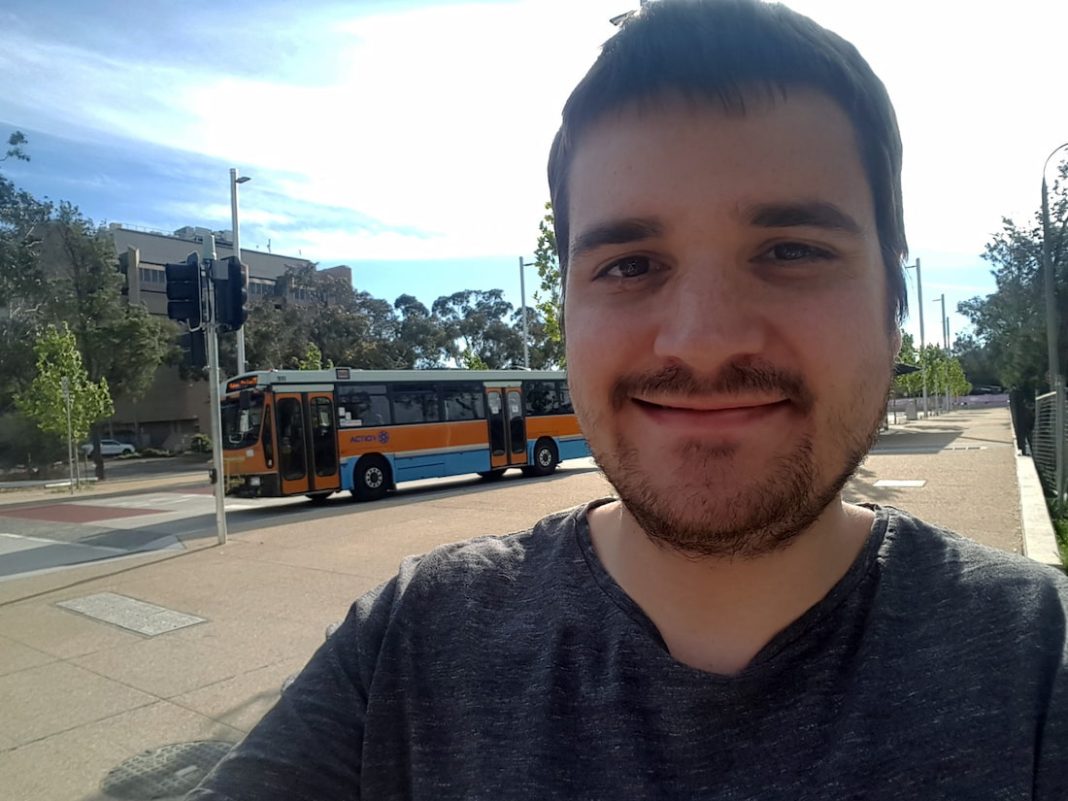The chassis was made in Brisbane and the body was made in Melbourne but by golly our old, blue-and-orange Action buses are 100 per cent Canberran and since 1987, they’ve driven the equivalent of 75 times around the planet.
Until now. After racking up about three million kilometres each, the last Renault PR 100.2 made its final trip this week and for avid bus-spotter Kyle Hanley, it was both historic and heartbreaking.
“I know from a reasonable perspective they’re just buses, they’re just going,” Kyle said. “But to me, it’s been a big part of my life going out and travelling around Canberra all the time and chasing them. It’s exhausting sometimes but I get a kick out of it.”
Kyle has been bus-spotting since he was 13 and, in the process, he’s collected 2,000 pieces of bus memorabilia and a 35-foot, 10-tonne Mercedes bus (his old school bus from Newcastle). He literally lives and breathes buses and his day job involves designing bus timetables and maps.
“I’ve taken hundreds of photos and my poor husband thinks I’ve been a little bit crazy getting up so early and going out and chasing them,” Kyle said. “But it’s not so bad now, there were only three left, so it was getting easier.”
Transport Canberra purchased about 250 buses between 1987 and 1993 and like our iconic bomb shelter bus shelters, our blue-and-orange public buses were distinctively Canberran. They also happen to be the oldest city buses in the country. The last three original buses, which finished up service this week, just turned 31 years old.
Kyle will now shift his bus-spotting focus elsewhere.
“It’ll reduce my bus-spotting slightly because my interest has always been in the older buses but it won’t be the end,” he said. “I think I need a little break from it because I’ve been going out so much. I’ll just pick a different type of bus in the fleet.”
So where do old buses go to die? Well, there’s no bus graveyard because many old Renaults have been “cannibalised” for spare parts over the years. The last remaining intact buses will be used by Transport Canberra for driver training. About 10 learners go out each fortnight.
Some have been sold to private buyers over the years and converted to accommodation or RVs. Kyle has personally delivered one to a buyer in Sydney (who actually bought two of the Renaults). There are also several old Renaults put out to pasture on farms and urban backyards around Canberra.
With more spare time on his hands, Kyle plans on developing an online photo gallery of the hundreds of “favourite” photos that he’s taken over the decades.
Meanwhile, at Transport Canberra, there’s now a modern fleet of about 450 buses, including electric, which have gradually replaced the old fleet over the past decade. The main reason for the bus upgrades is not mechanical (they were built to last), it’s accessibility. The old Renault’s have a high step to navigate.
Transport Canberra said there was a possibility that some of the old buses might be sold in the future, or at least one preserved for posterity.
Kyle hasn’t got room for any more buses but he’s always got time for bus-spotting.
“I’ll probably just pick a different type and just chase those instead, but it won’t be the same,” he said. “That hobby won’t be going away but it’ll just maybe lessen a little bit. It is a bit sad.”



